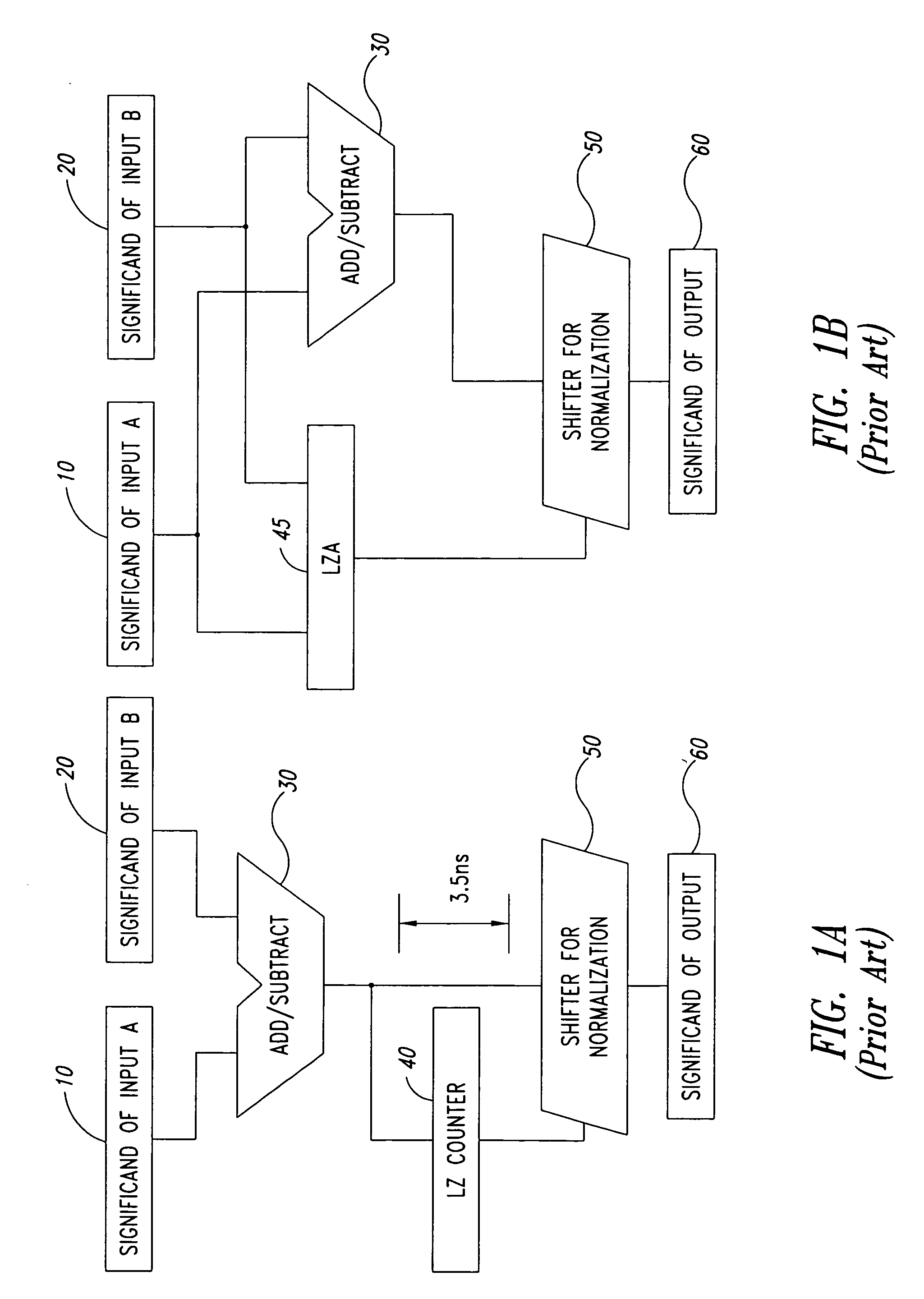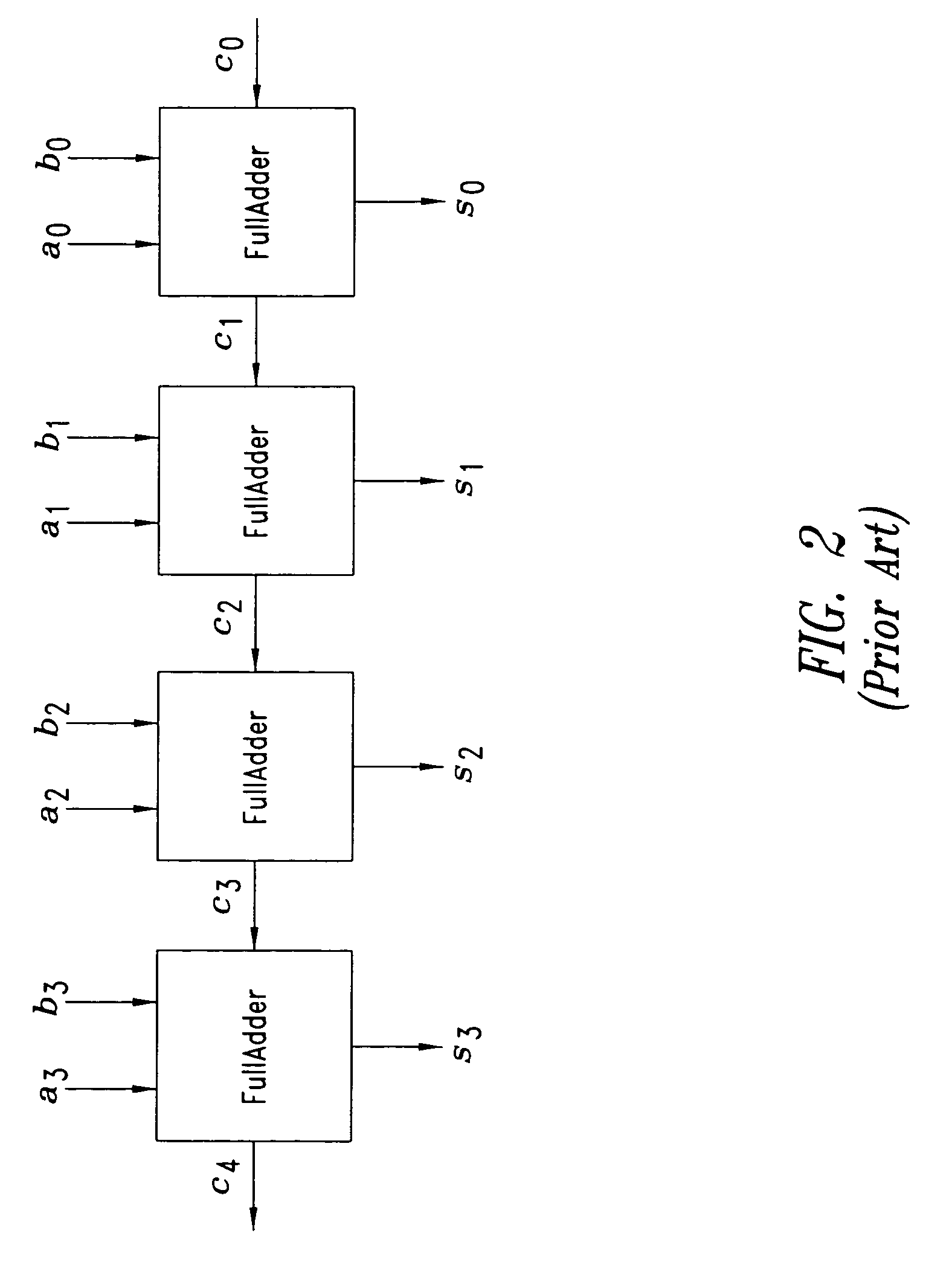Method and system for high-speed floating-point operations and related computer program product
a high-speed floating-point operation and computer program product technology, applied in the field of methods and systems for floating-point operations, can solve the problems of introducing a small precision error, reducing the accuracy of the integer adder, and consuming notable area, so as to reduce the error rate and its distribution, reduce the error propagation, and overcome the effect of uncertainty
- Summary
- Abstract
- Description
- Claims
- Application Information
AI Technical Summary
Benefits of technology
Problems solved by technology
Method used
Image
Examples
Embodiment Construction
[0071]The solution described herein, based on the Leading Zero Anticipatory approach, derives from the formula (2) above and takes it as a basis for generating the carry propagate signal. The solution described herein evaluates the carry in the formula (2) in a recursive manner with a depth of the recursive approach generally equal to N.
[0072]For the sake of simplicity, in the solution described herein N is selected equal to two or three. A greater value for N introduces a more complex arrangement when compared to the integer adder complexity.
[0073]This arrangement produces a word with the same number of leading zeroes with respect to the result produced by the integer addition.
[0074]This applies, strictly speaking, to an “ideal” LZA. The arrangement described herein “should” produce a word with the same number of leading zeroes as the integer adder. In fact it performs such a function with an error that can be reduced inasmuch as desirable (at least from the viewpoint of Boolean lo...
PUM
 Login to View More
Login to View More Abstract
Description
Claims
Application Information
 Login to View More
Login to View More - R&D
- Intellectual Property
- Life Sciences
- Materials
- Tech Scout
- Unparalleled Data Quality
- Higher Quality Content
- 60% Fewer Hallucinations
Browse by: Latest US Patents, China's latest patents, Technical Efficacy Thesaurus, Application Domain, Technology Topic, Popular Technical Reports.
© 2025 PatSnap. All rights reserved.Legal|Privacy policy|Modern Slavery Act Transparency Statement|Sitemap|About US| Contact US: help@patsnap.com



